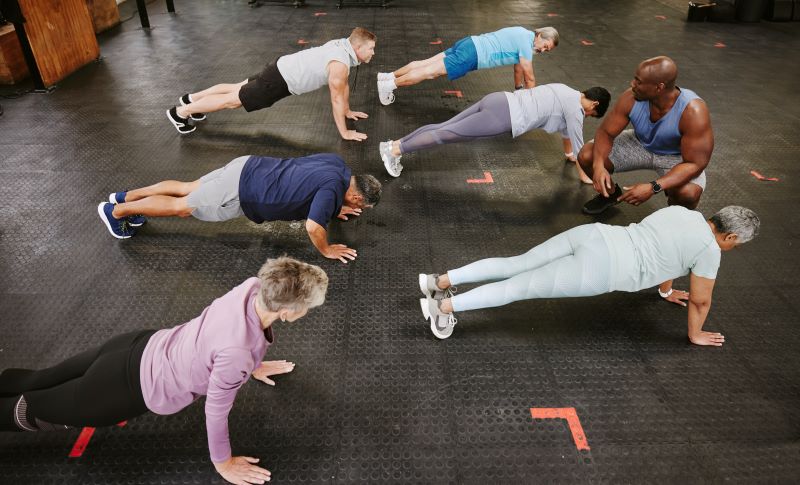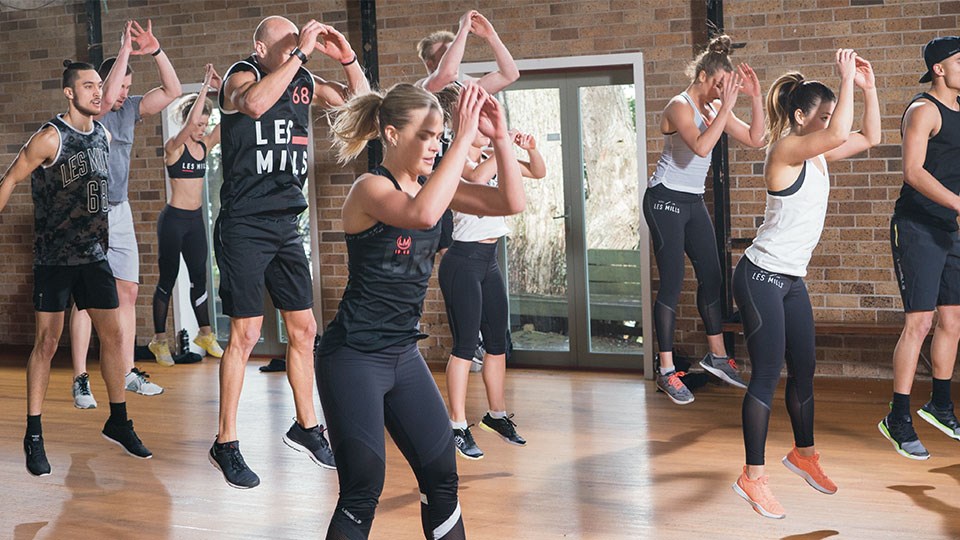10 Best Cardiovascular Exercises to Lose Weight

Losing weight is a lot of hard work that requires a proper diet alongside a combination of strength training and cardio. Cardio exercises elevate your heart rate and promote sustained physical exertion, ultimately aiding in burning calories and weight loss.
Are you planning to shed some pounds? Then, check out this curated list of cardio exercises for weight loss.
Keep scrolling to find the best exercises and tips to lose weight correctly.

Table of Contents

What Type of Fats Can be Reduced Through Cardio Exercises?
Cardio can help reduce harmful fats in the body. It is known to target both visceral and subcutaneous fats. Visceral fat, which is the other name for internal fat, should be feared as it increases the rate of metabolic diseases.
- Visceral Fat: Cardio will burn out harmful “internal” fats, decreasing chances for possible metabolic disorders.
- Subcutaneous Fat: Aerobics are beneficial as they can melt away subcutaneous fat, a fatty layer below the skin, making you look good overall.
- Intramuscular Fat: Regular cardiopulmonary activities help reduce muscle intramuscular fat, which essentially refers to fat stored within muscle fibres. This leads to improved muscle function and endurance.
Best Cardio Exercises for Weight Loss
Rather than spending bucks on gym equipment, you can find ways of doing cardio for weight loss. Moreover, cardio exercises make the process of losing weight much more fun.
Here are some forms of cardio that you can try:
1. Walking

Walking is a simple and convenient form of cardio exercise that burns calories. Though it is a low-impact activity, walking can keep an individual active and fit and strengthen one’s muscles and bones.
Moreover, walking is effective for weight loss if one increases one's pace. Brisk or fast walking can do the job. In addition, walking prevents an individual from various medical conditions, such as heart disease, high blood pressure, and type 2 diabetes.
An individual who walks fast and frequently will notice a significant loss in his/her weight. Furthermore, you can walk on a treadmill or go hiking.
- Best Time for This Exercise: Mornings or evenings
- Best Place for This Exercise: Outdoor or treadmill
- Duration: 30 minutes of brisk walking can reduce 150 calories a day
2. Jumping Ropes

Jumping rope is also a part of cardio exercises. A plyometric workout this cardio increases the heartbeats, leading to significant calorie reduction.
In addition, jumping ropes is a fun way to break the monotony while working out. One can include exercises like split jumps, jumping jacks, and box jumps into his/her routine, making cardio more effective.
- Best Time for This Exercise: Mornings or evenings
- Best Place for This Exercise: Outdoors and indoors
- Duration: 20 minutes of jumping rope helps reduce about 200 calories daily.
3. Climbing Stairs

Climbing stairs is one of the popular forms of cardio exercise for weight loss. This involves using the complete body. As climbing stairs involves lifting the legs with every step, this activity strengthens your legs and core muscles.
So, consider taking the stairs instead of an elevator. However, this exercise can strain one’s joints and pressure one's knees. Therefore, older individuals or those with bone-related issues should seek professional advice before climbing stairs as a cardio workout.
- Best Time for This Exercise: Whatever time suits you
- Best Place for This Exercise: Outdoors and indoors
- Duration: To burn 500 calories daily, an individual must climb about 30 flights of stairs.
4. Burpees

This is one of the best exercises for losing fat, and it combines jumps, squats, and pushups. Moreover, an individual must be involved in all the body parts to perform burpees. In addition, the muscle groups in one’s legs, chest, and core are trained.
- Best Time for This Exercise: Mornings (to improve sleep cycle)
- Best Place for This Exercise: Outdoor and indoor
- Duration: To burn 50 calories, one needs to perform 100 burpees.
5. High-intensity Interval Training (HIIT)

This form of cardio forces an individual to give maximum effort. Unlike regular exercises, an individual needs to work hard for 20-30 seconds with 10-20 seconds of rest interval in between. Therefore, it involves quick and intense exercises and short recovery periods.
Usually, cardio increases the heart rate, which leads to burning more fat in less time. HIIT workouts condition and train the body's anaerobic and aerobic energy systems. They also improve an individual's cardiovascular fitness level.
You can also include cycling, running, elliptical machines, swimming, and weights in your HIIT regime.
- Best Time for This Exercise: Mornings (to improve sleep cycle)
- Best Place for This Exercise: Outdoors as well as indoors
- Duration: 30-40 minutes of HIIT with a heart rate above 90% is suggested to burn calories.
6. Cycling

This low-impact exercise strengthens the leg muscles and improves heart health. In addition, outdoor cycling can help an individual burn calories. It also improves blood circulation requirements. Therefore, individuals who are uncomfortable cycling outdoors can invest in an indoor bicycle.
- Best Time for This Exercise: Morning (to improve sleep cycle)
- Best Place for This Exercise: Outdoors and indoors
- Duration: An individual can burn about 300 calories with 60 minutes of cycling.
7. Kettlebells

A kettlebell can be used to perform higher-intensity workouts. Kettlebell workouts are an effective way of reducing weight. Using this canon-shaped ball, an individual can combine strength training with cardio. Furthermore, kettlebell training supports an individual’s cardiovascular endurance while enhancing body balance, muscle strength, and flexibility.
- Best Time for This Exercise: Mornings or evenings
- Best Place for This Exercise: Indoors
- Duration: One burns approximately 100 calories from 100 kettlebell swings.
8. Swimming

Swimming is also a cardio workout that affects your entire body. While swimming, one tries to remain afloat or break out of the water, forcing the whole body to react.
- Best Time for This Exercise: Mornings or evenings
- Best Place for This Exercise: Indoors or outdoors, depending upon the location of a pool
- Duration: An individual can start with 15 to 20 minutes of swimming sessions daily and eventually increase this duration to 30 minutes.
9. Rowing

Rowing is a full-body exercise that works on triceps, glutes, biceps, shoulders, quads, back, and hamstrings. In addition, it helps in strength training, which is an added advantage.
- Best Time for This Exercise: Morning (to improve sleep cycle)
- Best Place for This Exercise: Outdoors
- Duration: One should complete at least 30–50 minutes of rowing 5-6 times weekly for best results.
10. Sprinting

Sprinting is an excellent exercise that aids weight loss. As this intense workout involves the whole body, the results are quick. Moreover, it burns huge amounts of calories in the least amount of time.
- Best Time for This Exercise: Mornings or evenings
- Best Place for This Exercise: Outdoors or indoors (on a treadmill)
- Duration: Sprinting in a session of 20 minutes thrice a week helps reduce nearly 4 pounds or 1.9 kg of body fat in 12 weeks.
Benefits of Cardio Exercises for Weight Loss
Cardio exercises offer a holistic approach to weight loss by elevating heart rate, which boosts calorie burning, enhances metabolic efficiency, and improves overall health. Engaging in consistent cardiovascular activities can provide numerous advantages beyond just shedding weight.
Enhanced Caloric Burn
Cardio exercises increase the heart rate, leading to higher caloric expenditure during and after the workout. This process, known as the "afterburn effect" or excess post-exercise oxygen consumption (EPOC), helps burn calories after the complete exercise session.
Boosted Metabolic Rate
Regular cardio activities stimulate the metabolic rate, making the body more efficient in using energy. This heightened metabolism aids in faster weight loss by converting stored fats into usable energy more effectively.
Improved Cardiovascular Health
Cardio exercises help lower the risk of heart disease by strengthening the heart and improving circulation. A robust cardiovascular system supports better endurance and stamina, facilitating longer and more intensive workout sessions.
Increased Fat Oxidation
Aerobic exercises enhance the body’s ability to oxidise fat during physical activities. This means the body becomes more efficient in using fat as a primary energy source, contributing to significant fat loss over time.
Enhanced Muscle Tone
While primarily targeting fat, cardio exercises also engage various muscle groups, improving muscle tone and definition. This dual benefit reduces fat and enhances the overall physique by promoting lean muscle mass.
Elevated Mood and Stress Reduction
Regular cardio workouts release endorphins, the body's natural mood lifters. These endorphins help alleviate stress, anxiety, and depression, making it easier to stay motivated and consistent with weight loss goals.
Better Sleep Quality
Cardio exercises, significantly earlier in the day, help regulate sleep patterns. Improved sleep quality aids in better recovery and weight management by balancing hunger hormones and reducing late-night cravings.
Strengthens Immunity
Cardio exercises support the immune system by keeping the body active and improving overall health. Regular activity reduces the risk of infections and enhances the body's resilience against various illnesses.
Improves Blood Circulation
Cardio workouts enhance blood circulation, which helps eliminate toxins from the body. Improved circulation prevents health complications related to poor blood flow, such as cardiovascular diseases and blood pressure issues.
How are Cardio Exercises Related to Weight Loss?
Practising cardio exercise for weight loss elevates your heart rate. This increased heart rate indicates that the body is burning excess fat. Specific individuals prefer a high-intensity cardio workout as it is the quickest way to burn calories through physical training.
Aerobic exercise relies on the body’s ability to control oxygen, reaching the muscles to burn energy and fat. Hence, to lose and maintain weight, one must include cardio exercises for at least 300 minutes a week in one's workout regime.
Moreover, it is imperative to set a target or weight goal. In this regard, one can follow the Body Mass Index (BMI) results and plan an exercise schedule. In addition, considering one's body shape and existing medical conditions is also essential before starting cardio.
Sometimes, a trainer may suggest high-intensity workouts, which support muscle strength and allow you to shed weight. That said, following this suggestion blindly can harm one’s health. Instead, an individual can start from low-intensity exercises and gradually move to more intense ones.
Which Body Parts Get Impacted While Doing Cardio Exercises for Weight Loss?
Here is the list of body parts you must know that are exercised, targeted, toned, and used while doing cardio exercises:
Body Part |
Description |
| Heart | Cardio exercises strengthen the heart, enhancing cardiovascular health and endurance. |
| Legs | Running, cycling, and stair climbing tone the quadriceps, hamstrings, calves, and glutes. |
| Core | High-intensity workouts and activities like swimming and rowing engage the core muscles, including the abs and obliques, aiding in belly fat reduction. |
| Back | Exercises like rowing and elliptical training work the upper and lower back muscles, promoting better posture and strength. |
| Arms | Movements such as boxing, rowing, and swimming tone the biceps, triceps, and forearms, enhancing arm strength and definition. |
| Glutes | Cardio exercises involving leg movements, like running and stair climbing, effectively tone the gluteal muscles, contributing to a firmer posterior. |
How Many Calories Are Burned in Cardio?
Normally, moderate cardio may burn 300 – 600 calories per hour, while intense ones could burn more than 600 – 900 calories hourly. Moreover, high-intensity workouts cause an after-burn effect, where additional calorie burning continues at an increased post-exercise metabolic rate.
Personalised factors, such as body composition and metabolic efficiency, are crucial in determining the exact calorie expenditure. Regular cardio exercise significantly contributes to creating a caloric deficit necessary for weight loss.
Best Time of the Day for Cardio
The optimal time for cardio exercises can vary based on personal goals and daily routines, but it often hinges on individual preferences and specific health benefits. Morning cardio is ideal for boosting metabolism, while afternoon or evening sessions better suit those looking to enhance performance and recovery.
- Morning: Exercising in the morning can kick-start your metabolism and elevate energy levels throughout the day. Establishing a consistent routine also encourages adherence and can lead to improved mood and productivity.
- Afternoon: Midday workouts may enhance performance due to elevated body temperature and increased muscle flexibility. This timing can also break up the workday, providing a refreshing energy boost and helping reduce afternoon fatigue.
- Evening: Cardio during the evening can be an effective stress reliever after a busy day. It also leads to better performance for some due to optimal body temperature and energy levels and helps unwind and prepare for better sleep.
Who Should Avoid Cardio Exercises for Weight Loss?
Cardio exercises for weight loss, such as brisk walking and jogging, are safe for most individuals and help them lose weight. However, doctors restrict an individual from performing cardio exercises if they have medical conditions like:
Heart Disease
Kidney Issues
Type 1 or Type 2 Diabetes
Arthritis
High or Low Blood Pressure
Cancer-Related Treatment
Additionally, beginners in this exercise should begin moderate-level cardio to avoid severe body aches or injuries.
Precautions to Take When Doing Cardio Exercises for Weight Loss
When incorporating cardio exercises into a weight loss routine, it's crucial to consider safety to prevent injuries and maximise benefits. Taking appropriate precautions ensures that workouts are effective, sustainable, and aligned with individual health needs.
- Warm-Up and Cool-Down: Begin each session with a warm-up to prepare muscles and gradually increase heart rate. Similarly, end with a cool-down to safely lower the heart rate and stretch muscles, aiding recovery and reducing soreness.
- Stay Hydrated: Maintain proper hydration before, during, and after workouts to prevent dehydration, which can impair performance and increase the risk of heat-related illnesses.
- Wear Proper Footwear: Wear well-fitted, supportive shoes appropriate for the specific cardio activity to prevent foot and joint injuries. Shoes should provide adequate cushioning and stability.
- Monitor Intensity: Keep track of workout intensity, especially for beginners, to avoid overexertion. A heart rate monitor can help you stay within a safe range for effective fat-burning without overloading the cardiovascular system.
- Listen to Your Body: Pay attention to any discomfort, pain, or fatigue signs. Rest if needed and consult a healthcare provider if you experience persistent issues or have underlying health conditions.
Techniques for Effective Cardio Exercises
Implementing targeted strategies can enhance the efficiency of cardio workouts, making them more effective for weight loss and fitness.
- Interval Training: Alternate high-intensity bursts with lower-intensity recovery periods to maximise fat-burning and cardiovascular benefits.
- Maintain Consistency: Engage in cardio 3 to 5 times weekly to establish a steady caloric deficit and support ongoing weight loss.
- Incorporate Variety: Rotate different cardio exercises to target various muscle groups and prevent boredom, keeping workouts engaging.
- Monitor Progress: Track workout details and progress through apps or journals to set goals and stay motivated by visible improvements.
- Focus on Form: Ensure correct posture and technique to avoid injuries and enhance the effectiveness of each cardio session.
How to Add Cardio to Your Workout Program?
Integrating cardio into your fitness routine enables weight loss and overall health, complementing other exercise forms for balanced fitness.
- Start Gradually: Introduce cardio with short sessions, gradually increasing duration and intensity to adapt safely and avoid burnout.
- Mix Cardio with Strength Training: Alternate cardio and strength sessions to balance fat burning with muscle building for a toned physique.
- Set Clear Goals: Define measurable objectives for your cardio routine to stay focused and motivated towards achieving specific outcomes.
- Schedule Regular Sessions: Allocate consistent days and times for cardio within your routine to establish a reliable and sustainable workout pattern.
- Use Technology: Employ fitness apps or wearables to monitor heart rate, track sessions, and receive reminders, enhancing motivation and progress tracking.
Now that you know about cardio exercise consider giving it a try. However, to achieve this goal, remember to include a healthy diet and 8 hours of sleep. Moreover, combining your cardio regime with strength training will help you burn unwanted fat easily and quickly.
Disclaimer: It is advised that individuals take advice from a professional before starting a new workout routine, especially those with underlying health issues.
















